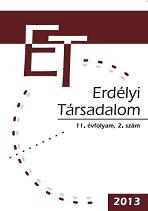A területi középszint problematikája Magyarországon (1989–2011)
Problems of the medium level government in Hungary (1989–2011)
Author(s): Tibor Kovács, Lóránt Dávid, Zoltán BujdosóSubject(s): Social Sciences
Published by: Presa Universitara Clujeana
Keywords: territorial government; medium level government
Summary/Abstract: The development of regionalism and regionalisation had – obviously – different paths of development both in terms of time and space. For example, in case of the Eastern bloc countries during the socialist era, we can hardly (if at all) speak about regionalism as a form of medium level self-governance, because the principality of statism did not – and in order to gain and keep full power and control over the whole society, could not – allow the evolution of such a “meso-level”. After the collapse of the socialist block, the situation has been and still is under transition: in the ex-communist countries located in the neighbourhood of the developed Europe (e.g. Hungary), some kind of regionalisation evolved, showing not only similarities, but also diff erences in relation to the Western models. Th is study discusses the future possibilities of this “meso-level” in Hungary. The most important dilemma concerning the enforcement of the regional medium level in Hungary is whether there should be counties, large counties, NUTS 2 regions or NUTS 1 regions. There are multiple options, with different implications for the distribution of tasks among governmental and municipal authorities. The Hungarian system of counties (NUTS 3 level) has been able to adapt to the changing social, economic and political circumstances throughout the past centuries, and also had a signifi cant role in preserving values and identity; therefore, this system is discussed with emphasis in our study.
Journal: Erdélyi Társadalom
- Issue Year: 11/2013
- Issue No: 02
- Page Range: 55-66
- Page Count: 12
- Language: Hungarian

